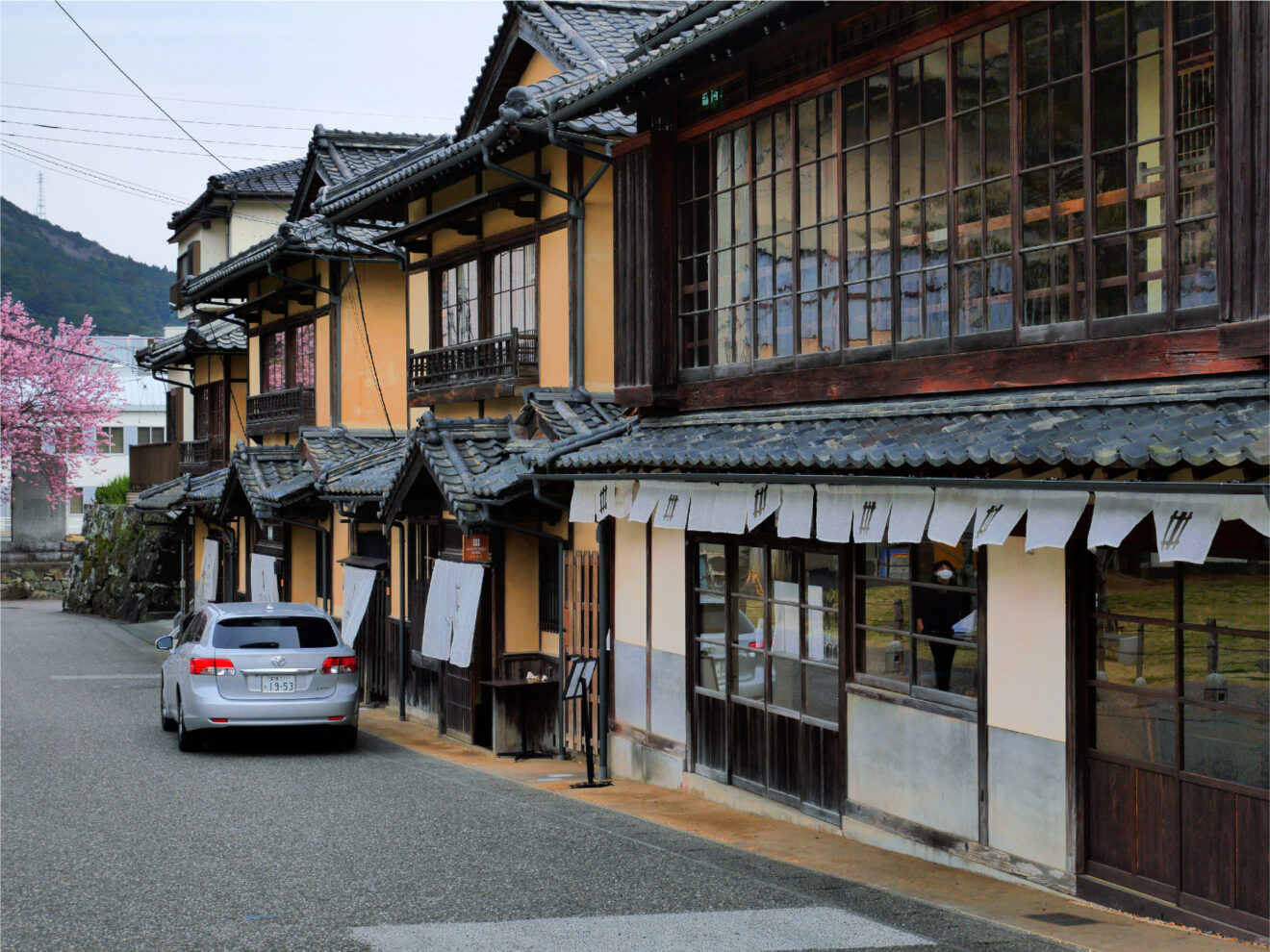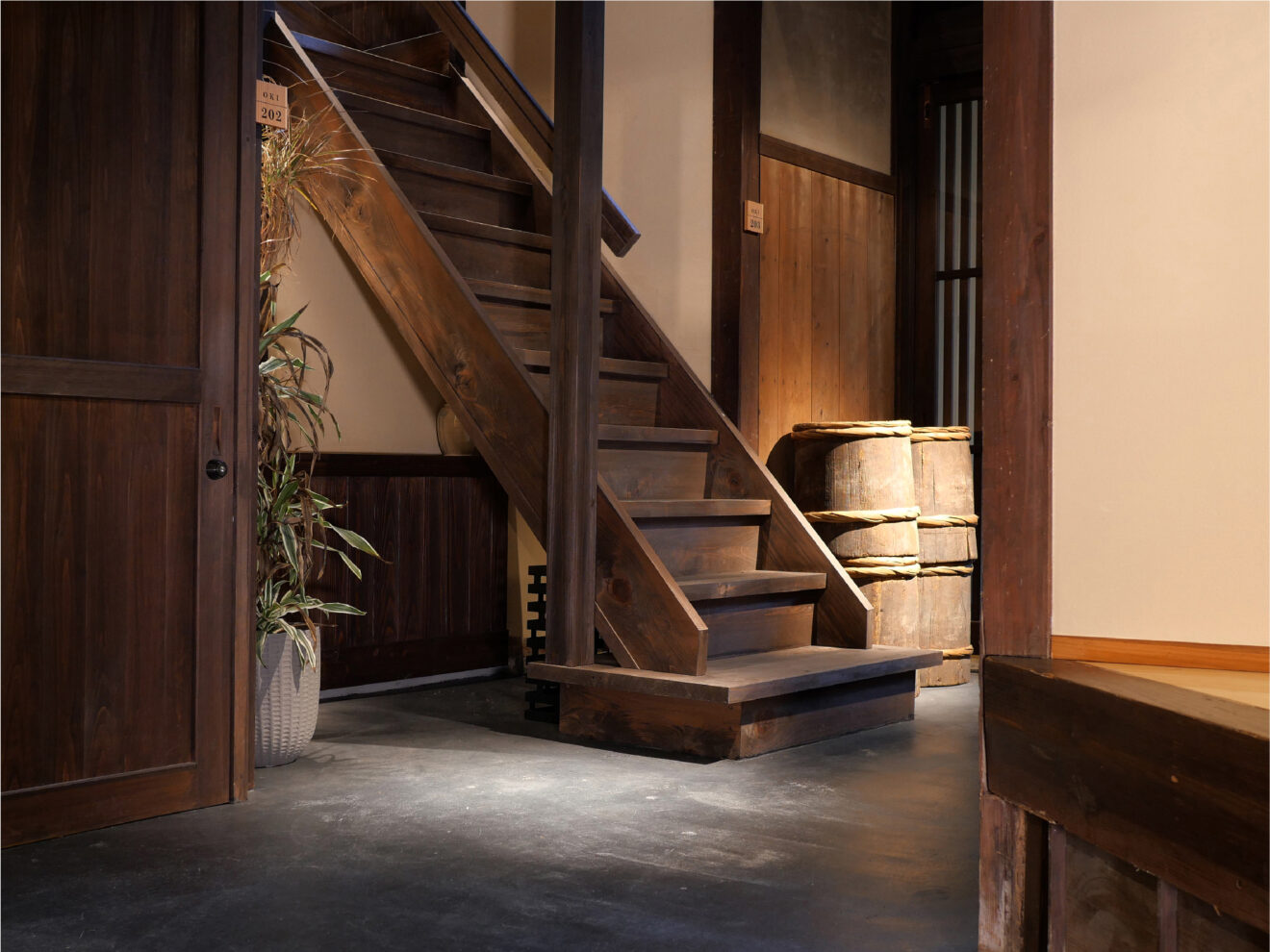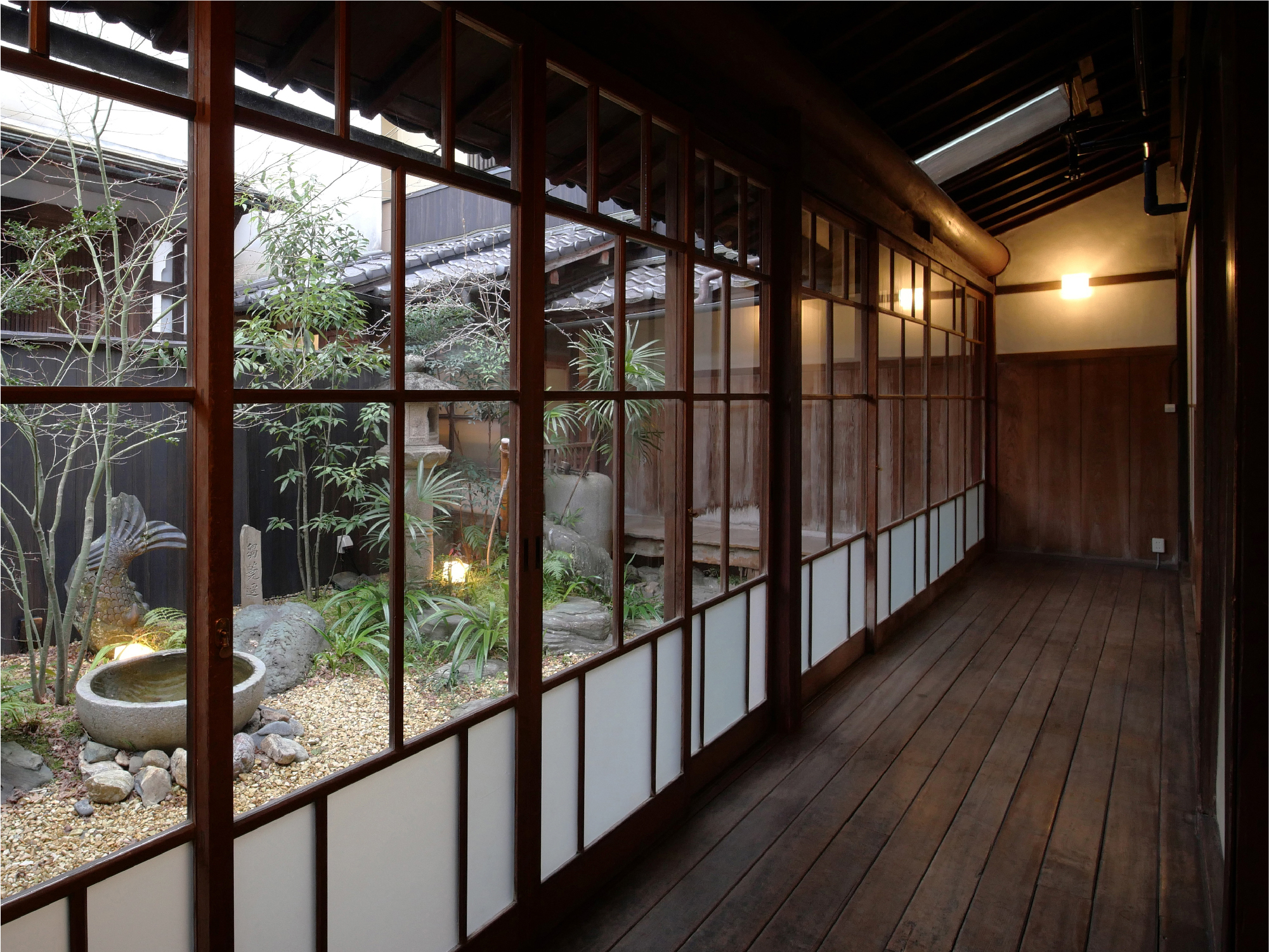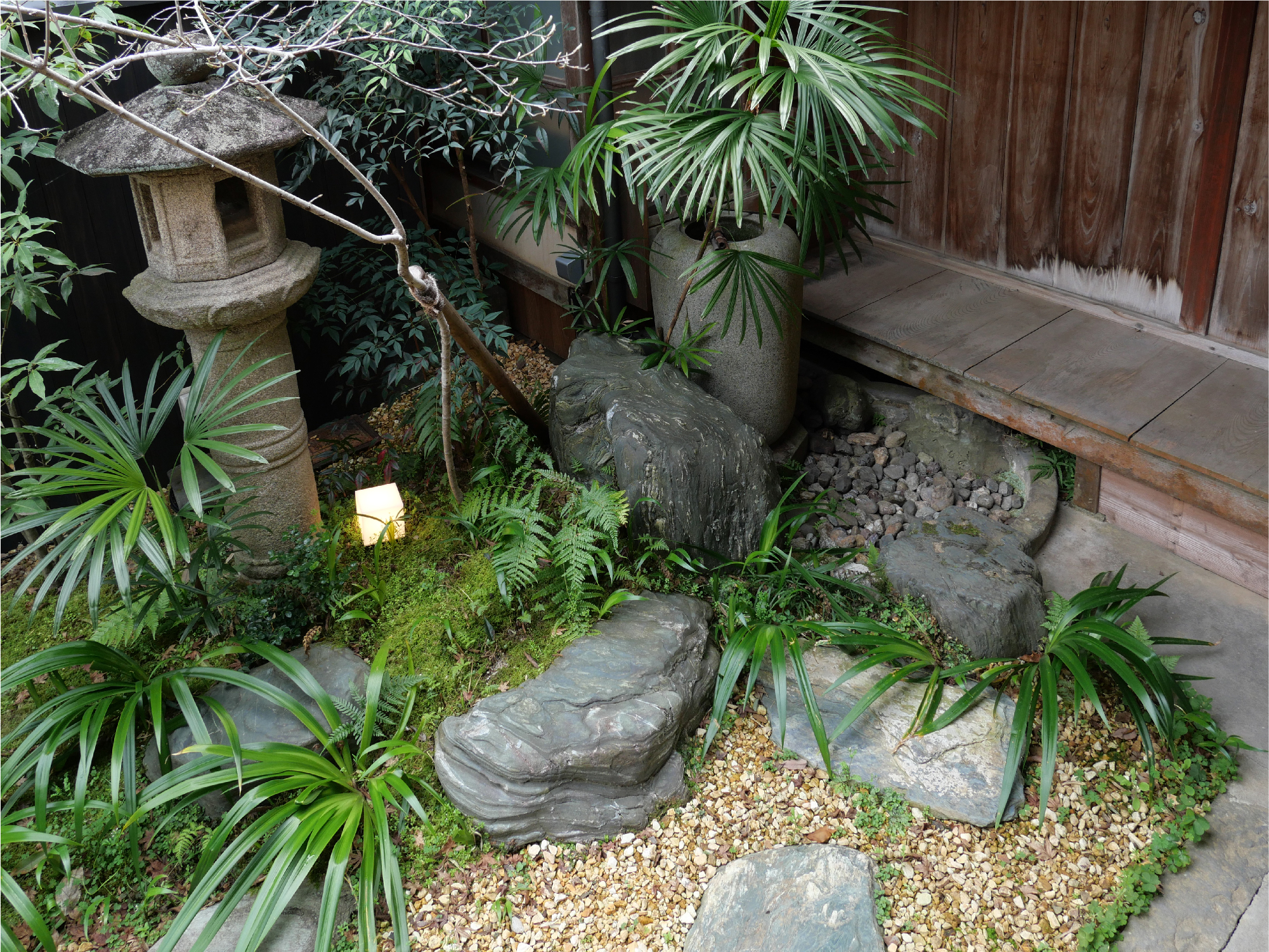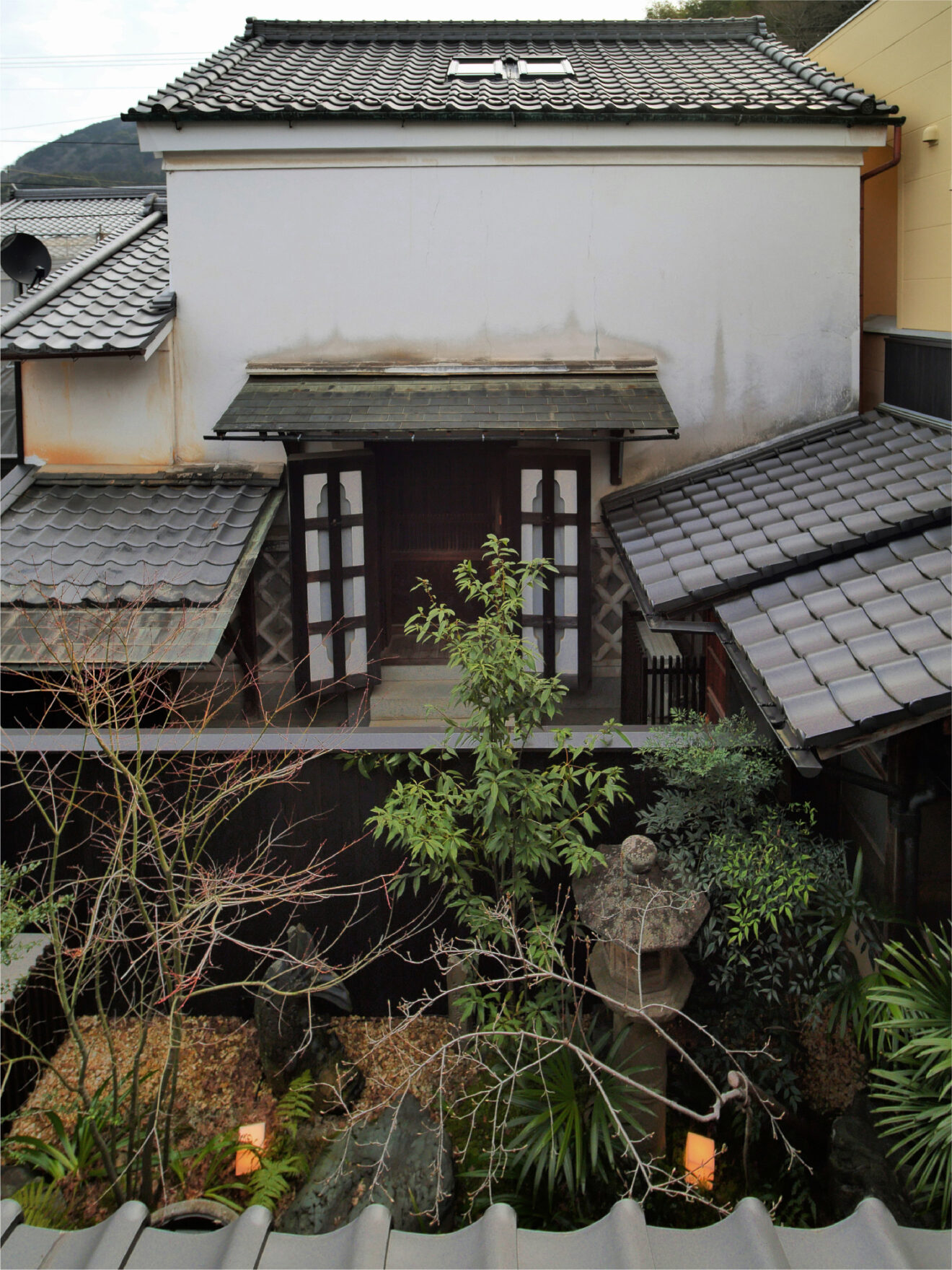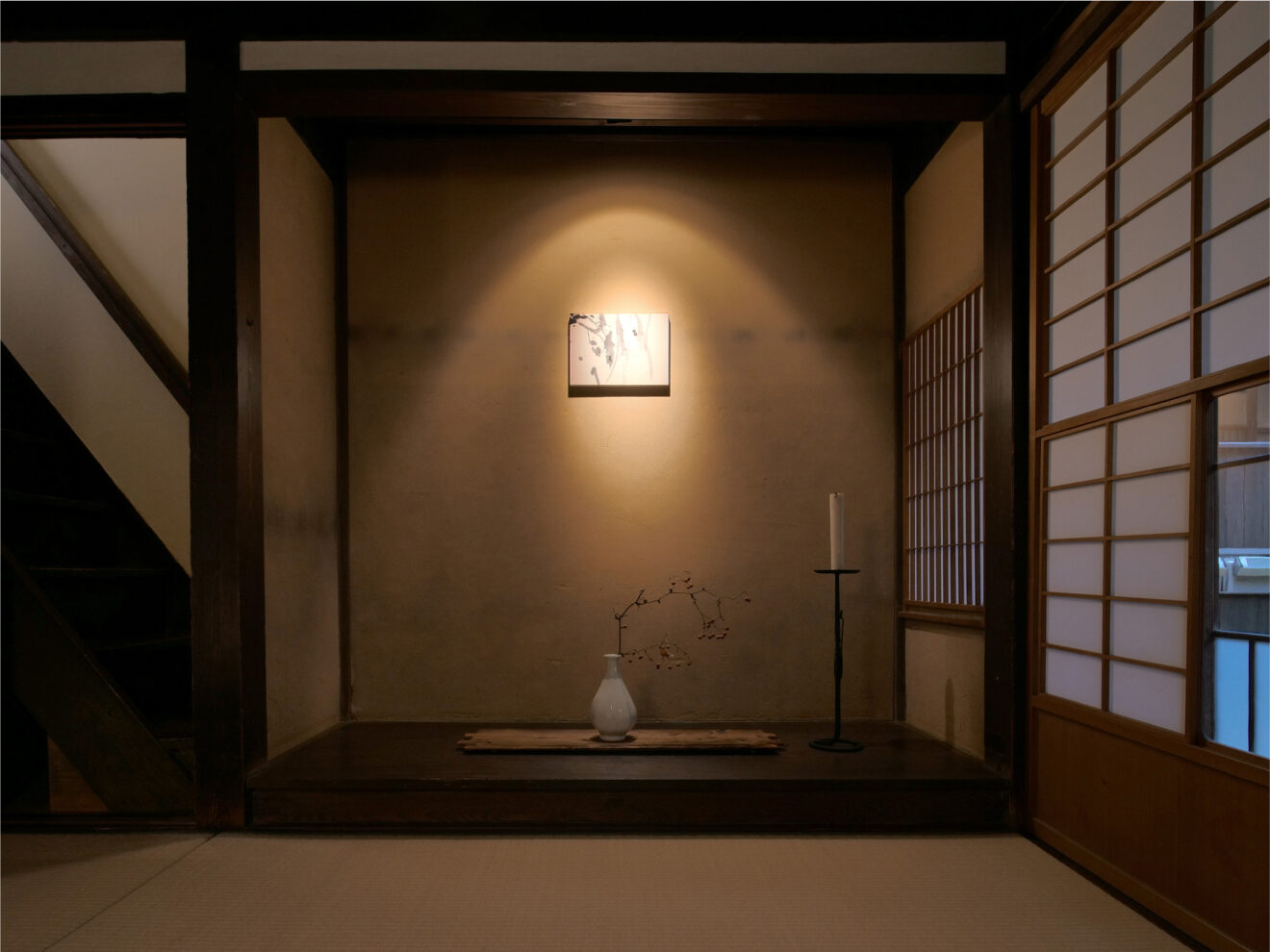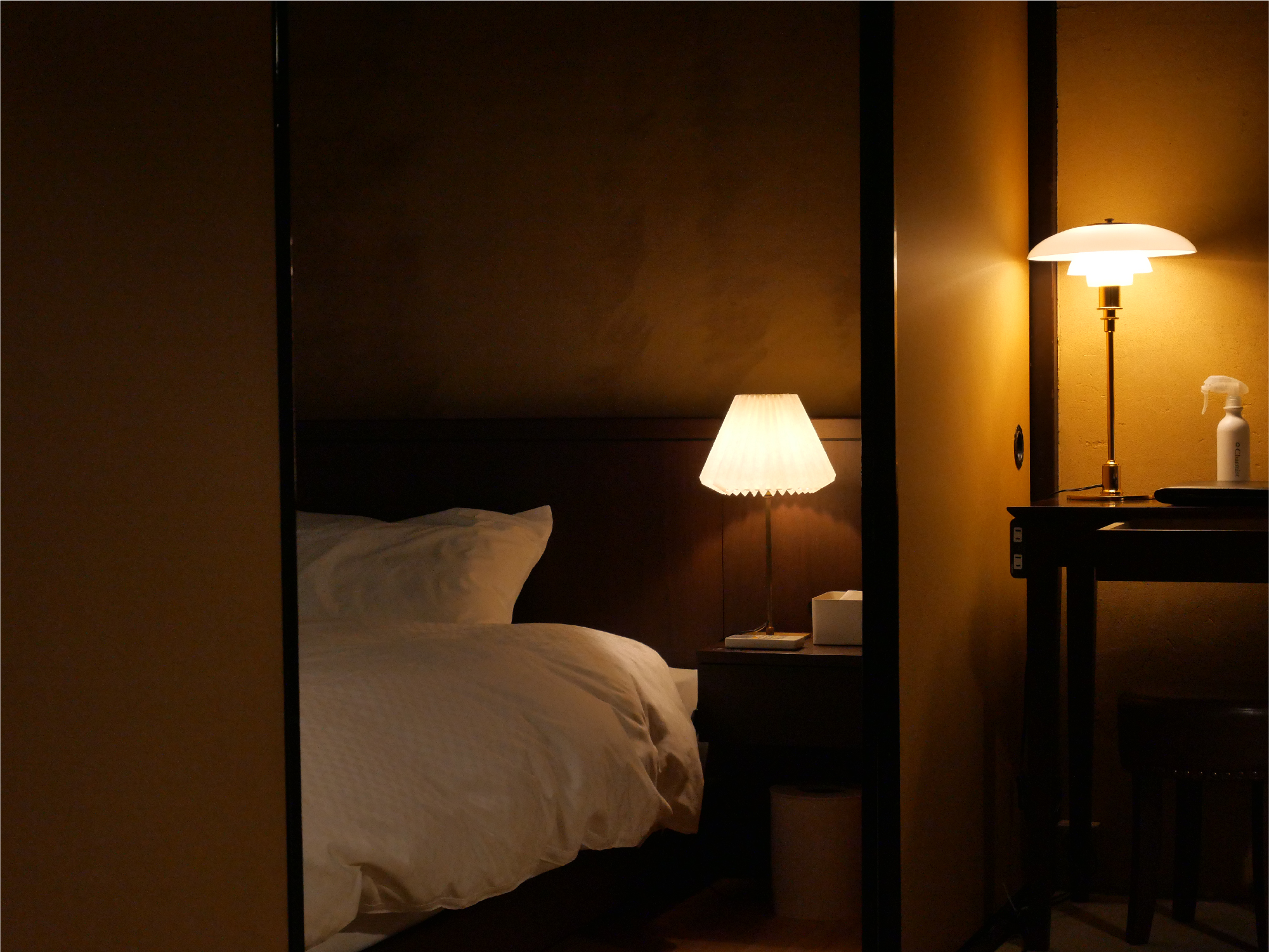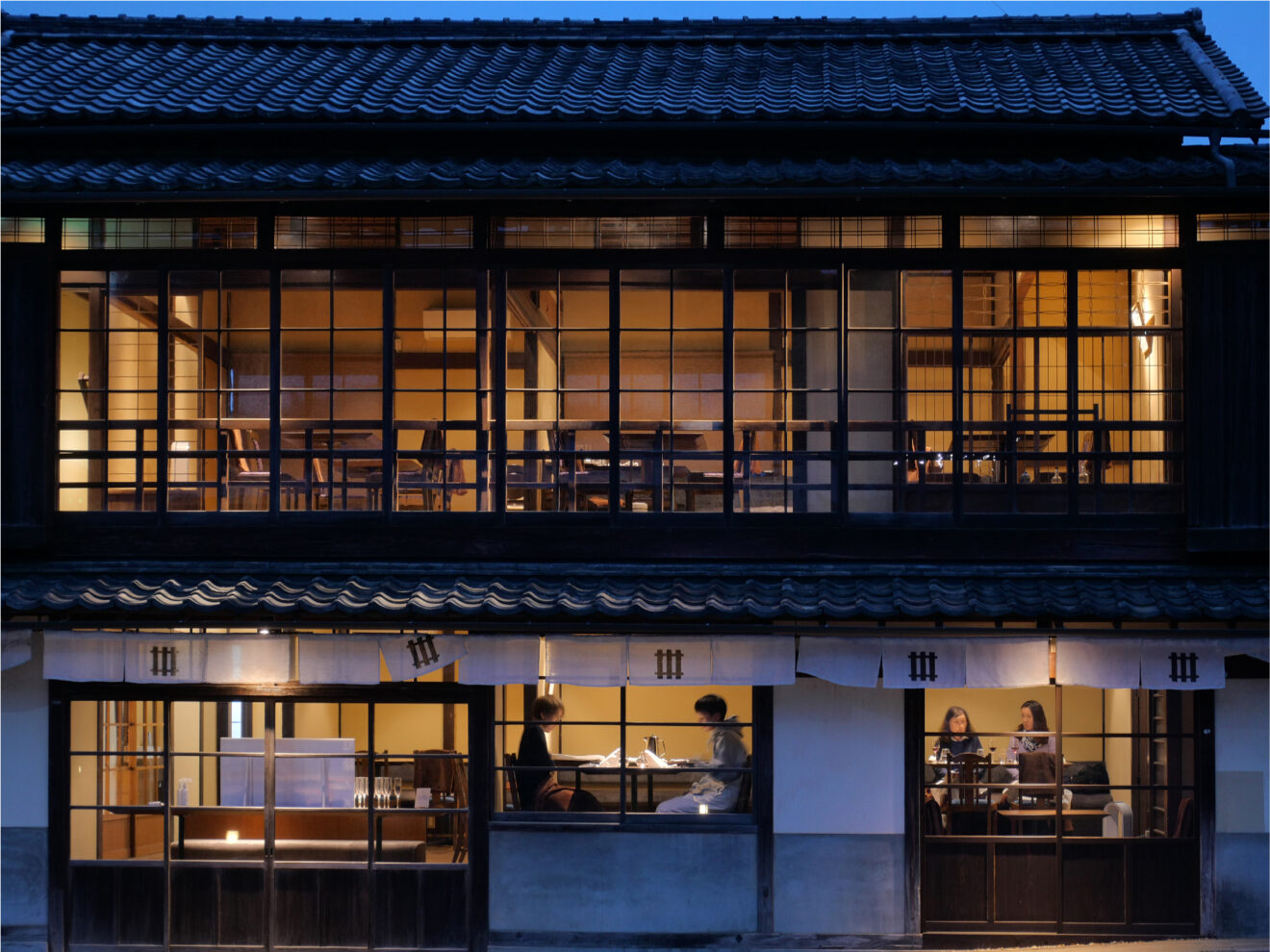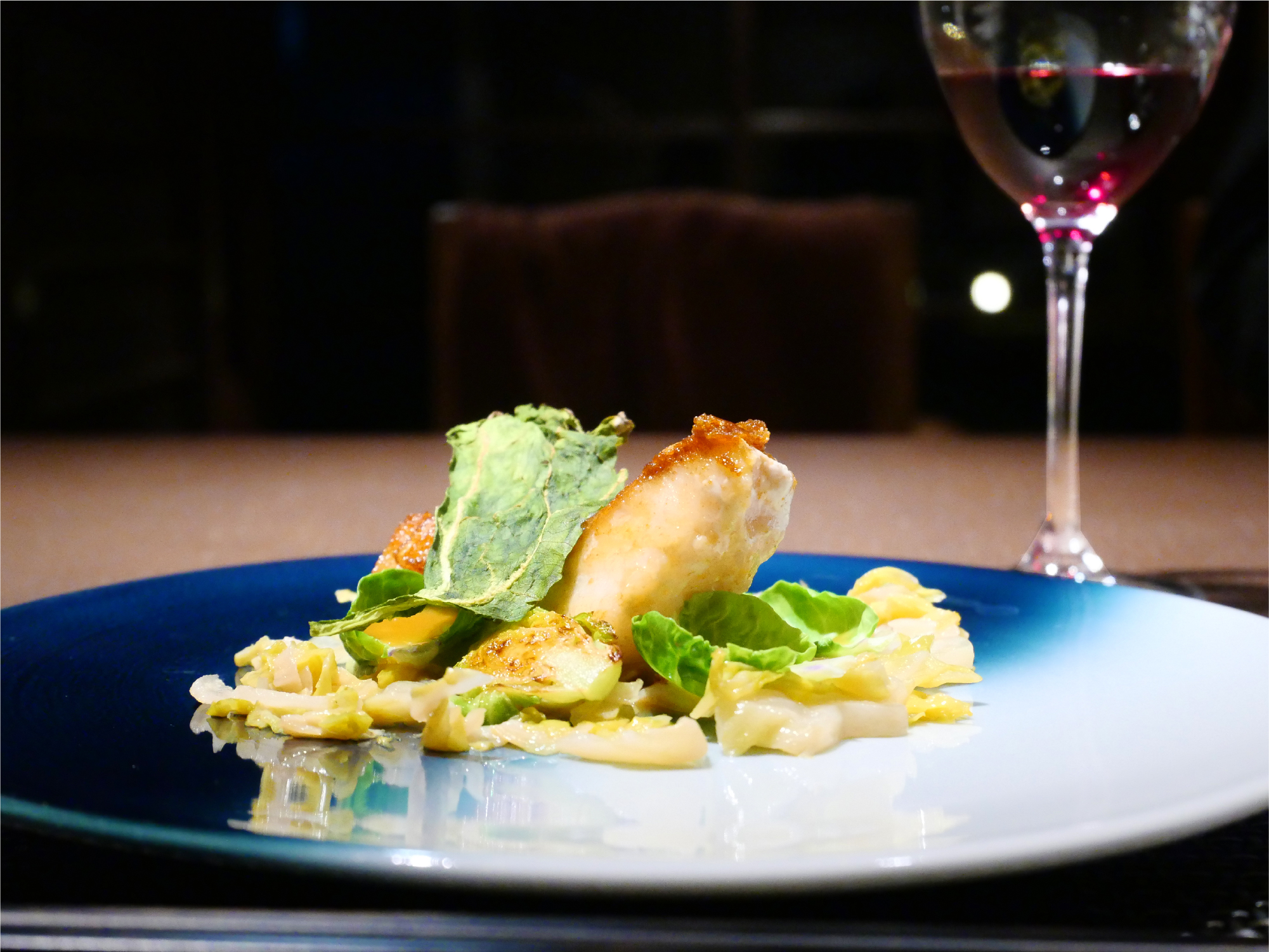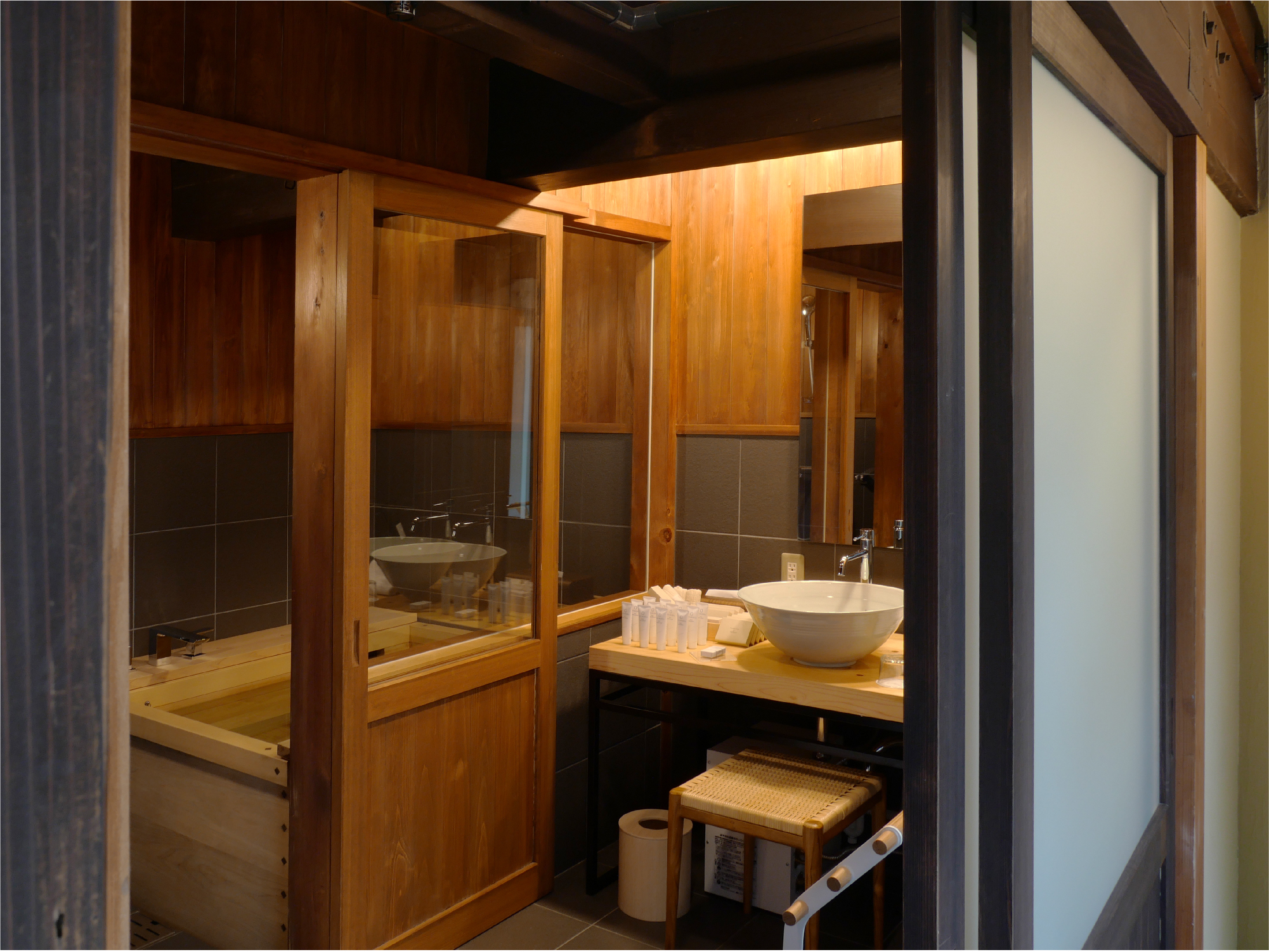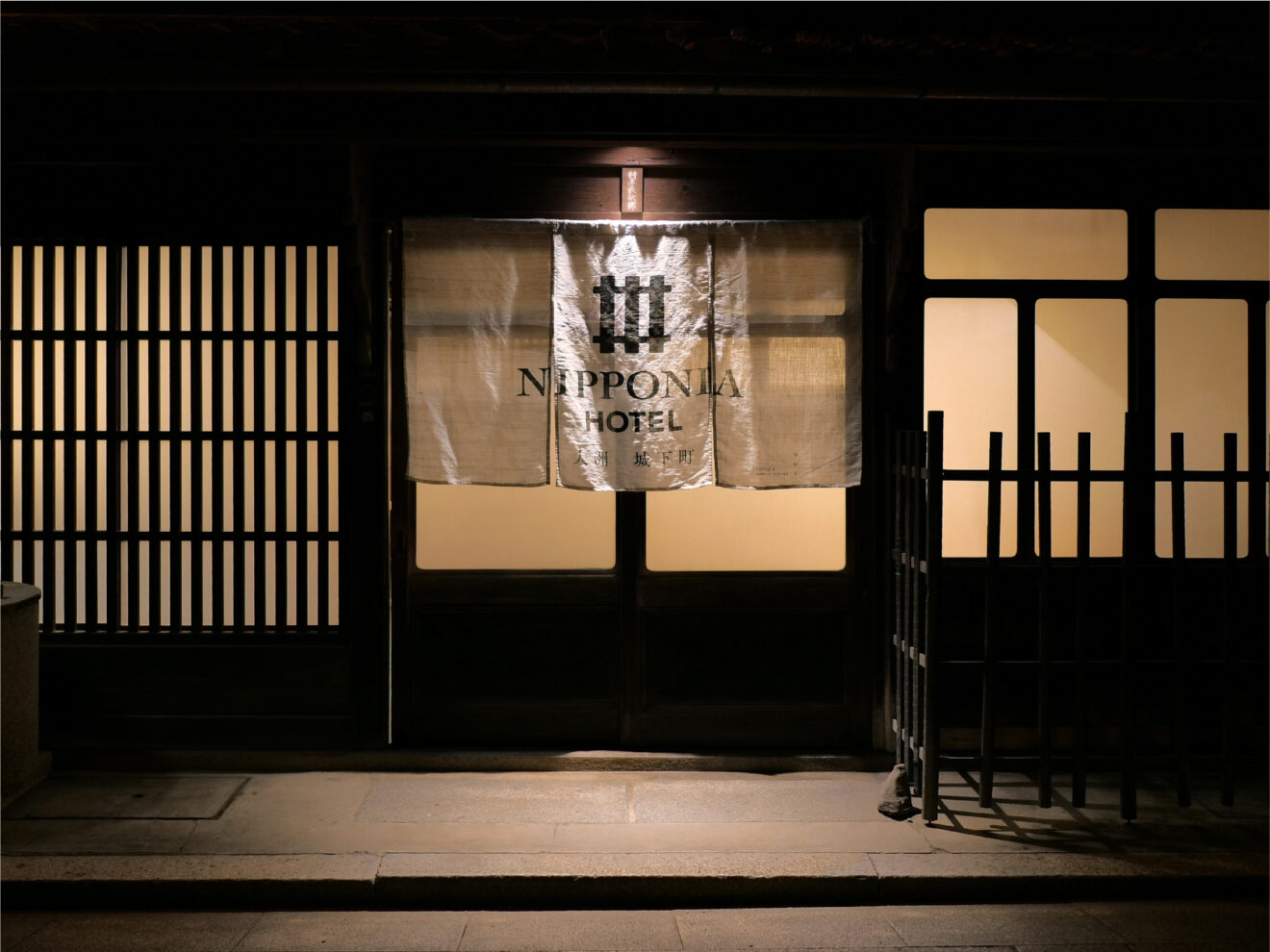Nipponia Ozu
Japan

Japan
About a 15-minute walk from the famous Garyū Sansō Villa is a hotel that stands quietly among the streets of Ōzu, where good old-fashioned Japanese scenery can still be enjoyed.
This is Nipponia Ozu, a renovated mansion with a rich history – brought back to life as a hotel.
The first thing that caught me by surprise as I entered the building was the way into my room. After passing through the entrance that was shared with other guests, I saw a tatami room towards the right with my room number written on the side. “Don’t tell me I’m supposed to sleep in this big open area,” I thought to myself. Then I used my key to open the sliding wooden door and the approach leading to my room appeared. Whew, what a relief.
At the end of the hallway, my eyes were suddenly treated to a small Japanese courtyard garden (tsuboniwa) through the shōji screen at the back of an old-fashioned Japanese-style room. It was quite nostalgic, this feeling.
An engawa porch leads to the bathing room and annexed toilet.
As I slowly sipped on a cup of green tea, enjoying the tsuboniwa, I happened to notice a fusuma door next to the tokonoma alcove.
“Could this be…?”
I quietly opened it and to my surprise, there was a hidden staircase! I felt like I was in a ninja house. The child in me came out and my heart raced with excitement. I climbed up the steep creaky stairs, holding desperately onto the handrail until I found myself in a spacious bedroom.
The big windows commanded a view of the tsuboniwa garden that I had seen earlier, along with a kura storehouse. (Incidentally, this storehouse is also being used as a guestroom.) Two rocking chairs and a low table were modestly placed beside the bed. As I laid back swaying in the rocking chair and gazed out the window, I got a strange feeling, as if I had slipped back in time.
One of the features of Nipponia Ozu is that the guestrooms and restaurant/reception areas are in different buildings. This is because the former mansion was renovated without moving any of the structures, which means not everything is in one place. It is all within walking distance though, and a shuttle service is available for those who request it,
so there is no feeling of inconvenience.
In fact, the slight distance provided a change of pace and felt refreshing.
When it was time for my dinner reservation, I visited the restaurant building overlooking Ōzu Castle.
The restaurant was very comfortable with the lights turned down and plenty of space between tables.
The hotel’s concept is local production for local consumption, and they serve French cuisine prepared with plenty of local ingredients. Not to be rude, but when I first made my reservation I wasn’t expecting much from the food. Just being able to spend the night in an old-fashioned kominka house would be a valuable experience in itself,
so I figured I’d be happy with the food as a simple extra.
Well, when it came, I was flabbergasted! I mean, the flavors were amazing! Not only were the dishes beautiful to look at, they were stunningly delicious. And they kept coming. Catch from the Seto Inland Sea was all fresh and arranged like art on Tobeyaki plates with contrasting white and ultramarine blue glaze.
Was I ever surprised. With that kind of taste and service, I definitely want to go back for the restaurant alone. (You can make reservations for meals only.) By the way, the menu changes every three months, to go with the season, which the chef devises, using seasonal ingredients. Makes sense!
After complete satisfaction from the exquisite cuisine, I used the shuttle to return to the guestroom building and sunk my tired body into the cypress tub filled with hot water, to relax after a long day. The main beams, pillars, and fittings remained just the way they originally were, but I could tell that the bathroom area and living spaces had been redesigned to accommodate modern living.
What really impressed me during my stay this time was that the relationship between Nipponia Ozu and the community had a casual feel to it. In the past, it often seemed as though hotels were designed with restaurants and other facilities to make them complete, creating a space of its own that disconnected the community, making nearby restaurants feel that their customers were being taken away. Nipponia is particular about the appearance of their buildings of course, and the use of local ingredients in their meals. They say that they hope to eventually increase the number of local staff members.
I could relate to their business style as a hotel in tune with the local community,
both in terms of tangible and intangible services.
